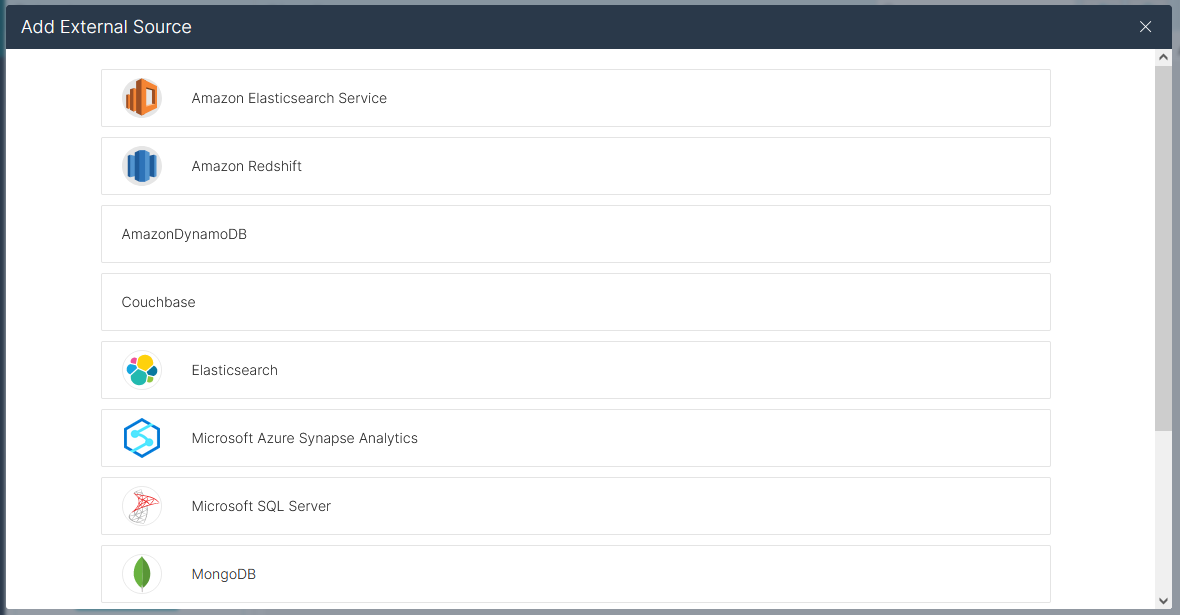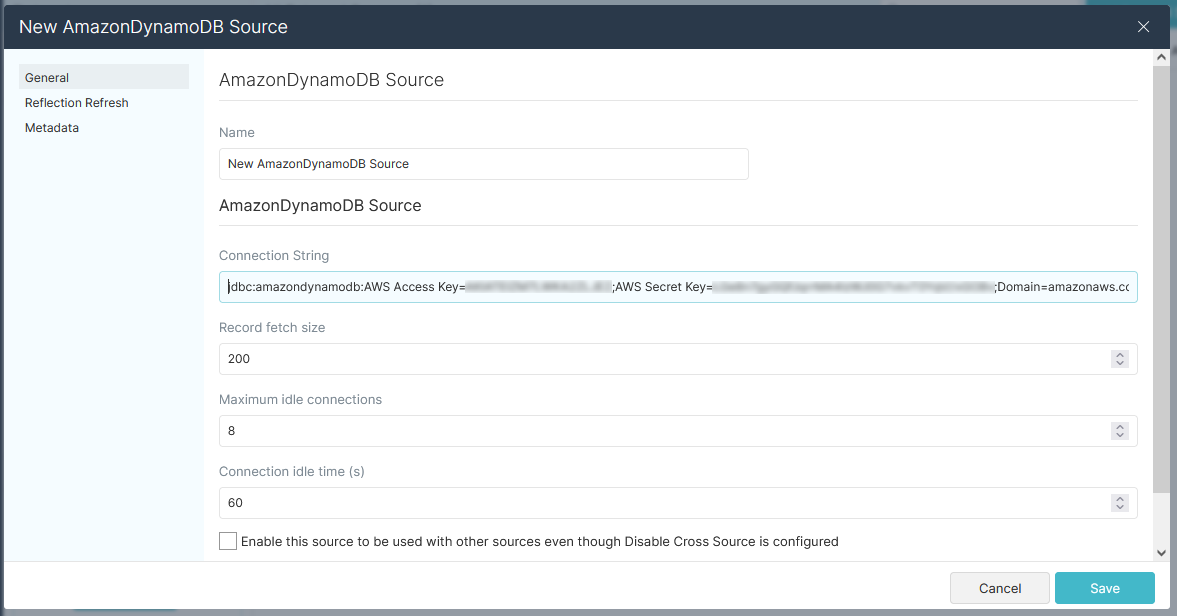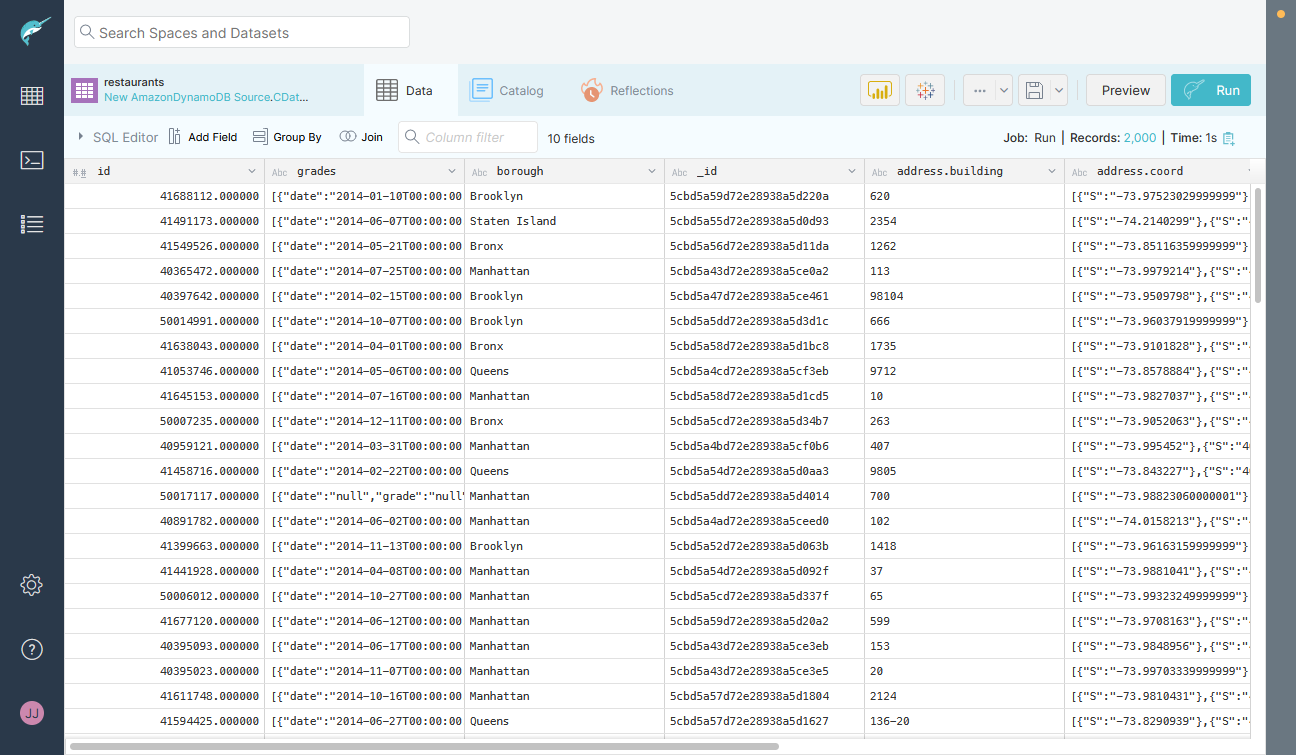Discover how a bimodal integration strategy can address the major data management challenges facing your organization today.
Get the Report →Connect to Xero Data as an External Source in Dremio
Use the CData JDBC Driver to connect to Xero as an External Source in Dremio.
The CData JDBC Driver for Xero implements JDBC Standards and allows various applications, including Dremio, to work with live Xero data. Dremio is a data lakehouse platform designed to empower self-service, interactive analytics on the data lake. With the CData JDBC driver, you can include live Xero data as a part of your enterprise data lake. This article describes how to connect to Xero data from Dremio as an External Source.
The CData JDBC Driver enables high-speed access to live Xero data in Dremio. Once you install the driver, authenticate with Xero and gain immediate access to Xero data within your data lake. By surfacing Xero data using native data types and handling complex filters, aggregations, & other operations automatically, the CData JDBC Driver grants seamless access to Xero data.
About Xero Data Integration
Accessing and integrating live data from Xero has never been easier with CData. Customers rely on CData connectivity to:
- Connect to Xero Accounts and both US and Australian Payroll APIs.
- Read, write, update, and delete ServiceNow objects like Customers, Transactions, Invoices, Sales Receipts and more.
- Use SQL stored procedures for actions like adding items to a cart, submitting orders, and downloading attachments.
- Work with accounting, payroll, file, fixed asset, and project data.
Customers regularly integrate their Xero data with preferred tools, like Tableau, Qlik Sense, or Excel, and integrate Xero data into their database or data warehouse.
Getting Started
Prerequisites
This article assumes you are utilizing Docker to run Dremio. You can create a Docker container with the Dremio service using a command similar to the follow:
docker run -d --name dremio -p 9047:9047 -p 31010:31010 dremio/dremio-oss
Where dremio is the name of the container, 9047 is the container's port for the Dremio web interface and 31010 is the port that maps to the Dremio query service. dremio/dremio-oss specifies the image to use.
Build the ARP Connector
To use the CData JDBC Driver in Dremio, you need to build an Advanced Relation Pushdown (ARP) Connector. You can view the source code for the Connector on GitHub or download the ZIP file (GitHub.com) directly. Once you copy or extract the files, run the following command from the root directory of the connector (the directory containing the pom.xml file) to build the connector.
mvn clean install
NOTE: The CData ARP Connectors are build to be compiled with Java 11. Be sure to install Java 11 and use the correct version. You can update your Java version using a command similar to the following:
sudo update-alternatives --config java
Once the JAR file for the connector is built (in the target directory), you are ready to copy the ARP connector and JDBC Driver to your Dremio instance.
Installing the Connector and JDBC Driver
Install the ARP Connector to %DREMIO_HOME%/jars/ and the JDBC Driver for Xero to %DREMIO_HOME%/jars/3rdparty. You can use commands similar to the following:
ARP Connector
docker cp PATH\TO\dremio-xero-plugin-{DREMIO_VERSION}.jar dremio_image_name:/opt/dremio/jars/
JDBC Driver for Xero
docker cp PATH\TO\cdata.jdbc.xero.jar dremio_image_name:/opt/dremio/jars/3rdparty/
Connecting to Xero
Xero will now appear as an External Source option in Dremio. The ARP Connector built uses a JDBC URL to connect to Xero data. The JDBC Driver has a built-in connection string designer that you can use (see below).

Built-in Connection String Designer
For assistance in constructing the JDBC URL, use the connection string designer built into the Xero JDBC Driver. Double-click the JAR file or execute the jar file from the command line.
java -jar cdata.jdbc.xero.jar
Fill in the connection properties and copy the connection string to the clipboard.
To connect, set the Schema connection property in addition to any authentication values. Xero offers authentication for private applications, public applications, and partner applications. You will need to set the XeroAppAuthentication property to PUBLIC, PRIVATE, or PARTNER, depending on the type of application configured. To connect from a private application, you will additionally need to set the OAuthAccessToken, OAuthClientId, OAuthClientSecret, CertificateStoreType, CertificateStore, and CertificateStorePassword.
To connect from a public or partner application, you can use the embedded OAuthClientId, OAuthClientSecret, and CallbackURL, or you can register an app to obtain your own OAuth values.
See the "Getting Started" chapter of the help documentation for a guide to authenticating to Xero.

NOTE: To use the JDBC Driver in Dremio, you will need a license (full or trial) and a Runtime Key (RTK). For more information on obtaining this license (or a trial), contact our sales team.
Add the Runtime Key (RTK) to the JDBC URL. You will end up with a JDBC URL similar to the following:
jdbc:xero:RTK=5246...;InitiateOAuth=GETANDREFRESH
Access Xero as an External Source
To add Xero as an External Source, click to add a new source and select Xero. Copy the JDBC URL and paste it into the New Xero Source wizard.

Save the connection and you are ready to query live Xero data in Dremio, easily incorporating Xero data into your data lake.

More Information & Free Trial
Using the CData JDBC Driver for Xero in Dremio, you can incorporate live Xero data into your data lake. Check out our CData JDBC Driver for Xero page for more information about connecting to Xero. Download a free, 30 day trial of the CData JDBC Driver for Xero and get started today.





